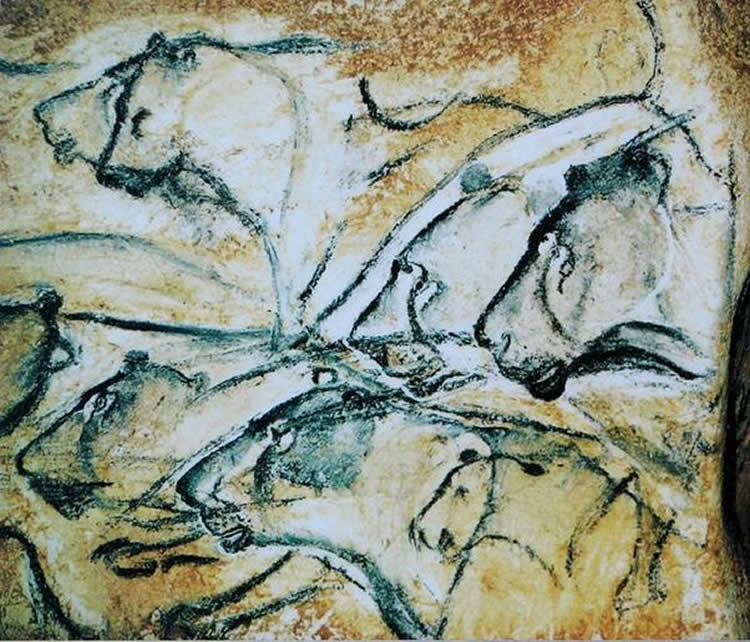Summary: A new study reveals people with autism played an important role in their social groups through human evolution because of their unique skills and talents.
Source: University of York.
A subtle change occurred in our evolutionary history 100,000 years ago which allowed people who thought and behaved differently – such as individuals with autism – to be integrated into society, academics from the University of York have concluded.
The change happened with the emergence of collaborative morality – an investment in the well-being of everyone in the group – and meant people who displayed autistic traits would not only have been accepted but possibly respected for their unique skills.
It is likely our ancestors would have had autism, with genetics suggesting the condition has a long evolutionary history.
But rather than being left behind, or at best tolerated, the research team conclude that many would have played an important role in their social group because of their unique skills and talents.
“We are arguing that diversity, variation between people, was probably more significant in human evolutionary success than the characteristics of one person, “said Penny Spikins, senior lecturer in the archaeology of human origins, at the University of York.
“It was diversity between people which led to human success and it is particularly important as it gives you different specialised roles.
“We are arguing that it is the rise of collaborative morality that led to the possibility for widening the diversity of the human personality.”
Many people with autism have exceptional memory skills, heightened perception in realms of vision, taste and smell and enhanced understanding of natural systems such as animal behaviour.
The incorporation of some of these skills into a community would play a vital role in the development of specialists, the authors of the report, which is published in Time and Mind, suggest.

A previous ethnographic study in 2005 of an elderly reindeer herder from Siberia revealed a detailed memory of the parentage, medical history and character of each one of his 2,600 animals.
His vital knowledge would have made a significant contribution to their management and survival.
The grandfather was more comfortable in the company of the reindeer than of humans, but was much respected and had a wife and son and grandchildren.
Finding tangible evidence of autism in archaeological records has always been challenging for academics.
Dr Spikins said “The archaeological record doesn’t give us a skeletal record for autism, but what it does do is give us a record for other people who have various differences and how they have been integrated.”
Other clues can be found in cave art and other artefacts.
“There has been a long-standing debate about identifying traits of autism in Upper Palaeolithic cave art.
“We can’t say some of it was drawn by someone with autism, but there are traits that are identifiable to someone who has autism. It was also roughly at that time that we see collaborative morality emerging.”
Funding: This work was supported by the Medical Research Council (LM and AOdB), the European Research Council, grant number ActSelectContext 260424 (SB), the Gatsby Charitable Foundation (PD), the Clinical Research Priority Program “Molecular Imaging” (KES), the René and Susanne Braginsky Foundation (KES), the Tourette Syndrome Association (DR), a Dorothy Feiss Scientific Research Grant (DR), and core funding from the Wellcome Trust Centre for Neuroimaging (CM) and the University of Zurich (KES). The funders had no role in study design, data collection and analysis, decision to publish, or preparation of the manuscript.
Competing Interests: The authors have declared that no competing interests exist.
Source: Alistair Keely – University of York
Image Source: NeuroscienceNews.com image is credited to University of York.
Original Research: Full open access research for “Are there alternative adaptive strategies to human pro-sociality? The role of collaborative morality in the emergence of personality variation and autistic traits” by Penny Spikins, Barry Wright & Derek Hodgson in Time and Mind. Published online November 15 2016 doi:10.1080/1751696X.2016.1244949
[cbtabs][cbtab title=”MLA”]University of York “Autism and Human Evolutionary Success.” NeuroscienceNews. NeuroscienceNews, 15 November 2016.
<https://neurosciencenews.com/autism-evolution-5527/>.[/cbtab][cbtab title=”APA”]University of York (2016, November 15). Autism and Human Evolutionary Success. NeuroscienceNew. Retrieved November 15, 2016 from https://neurosciencenews.com/autism-evolution-5527/[/cbtab][cbtab title=”Chicago”]University of York “Autism and Human Evolutionary Success.” https://neurosciencenews.com/autism-evolution-5527/ (accessed November 15, 2016).[/cbtab][/cbtabs]
Abstract
Are there alternative adaptive strategies to human pro-sociality? The role of collaborative morality in the emergence of personality variation and autistic traits
Selection pressures to better understand others’ thoughts and feelings are seen as a primary driving force in human cognitive evolution. Yet might the evolution of social cognition be more complex than we assume, with more than one strategy towards social understanding and developing a positive pro-social reputation? Here we argue that social buffering of vulnerabilities through the emergence of collaborative morality will have opened new niches for adaptive cognitive strategies and widened personality variation. Such strategies include those that that do not depend on astute social perception or abilities to think recursively about others’ thoughts and feelings. We particularly consider how a perceptual style based on logic and detail, bringing certain enhanced technical and social abilities which compensate for deficits in complex social understanding could be advantageous at low levels in certain ecological and cultural contexts. ‘Traits of autism’ may have promoted innovation in archaeological material culture during the late Palaeolithic in the context of the mutual interdependence of different social strategies, which in turn contributed to the rise of innovation and large scale social networks.
“Are there alternative adaptive strategies to human pro-sociality? The role of collaborative morality in the emergence of personality variation and autistic traits” by Penny Spikins, Barry Wright & Derek Hodgson in Time and Mind. Published online November 15 2016 doi:10.1080/1751696X.2016.1244949






